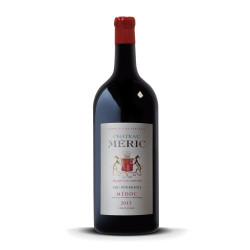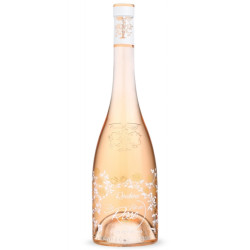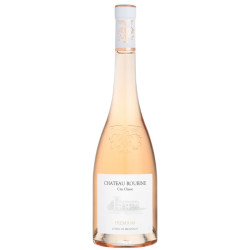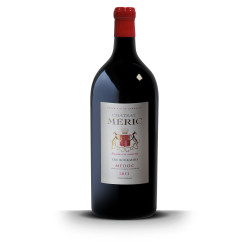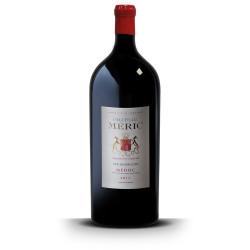Free delivery on purchases of €150 or more per winegrower in France and €250 in Europe (excluding United Kingdom)
Free delivery on purchases of €150 or more per winegrower in France and €250 in Europe (excluding United Kingdom)
-
- Great Offer
-
Our wines
-
-
By colors
-
All the wines
-
-
-
All Regions
-
-
-
-
Our organic & natural wines
-
-
Our Champagnes & Spirits
-
-
All Champagnes
-
-
Spirits
-
All the spirits
-
-
-
Our winemakers
-
-
-
winemakers
-
-
-
Our advice
-
-
Find your wine
-
-
-
- Our commitment !
-
- Great Offer
-
Our wines
-
-
By colors
-
All the wines
-
-
-
All Regions
-
-
-
-
Our organic & natural wines
-
-
Our Champagnes & Spirits
-
-
All Champagnes
-
-
Spirits
-
All the spirits
-
-
-
Our winemakers
-
-
-
winemakers
-
-
-
Our advice
-
-
Find your wine
-
-
-
- Our commitment !
Unbeatable !
Large-Format Wine and Champagne Bottles: Everything You Need to Know

Different Wine and Champagne Bottle Sizes
While the standard bottle holds 750ml (75cl), various larger formats exist for special occasions. Here’s an overview of the main large bottle formats:
Champagne Bottle Sizes :
- Magnum (1.5L) – Equivalent to two standard 750ml bottles.
- Jeroboam (3L) – Holds four bottles, perfect for large gatherings.
- Methuselah (6L) – Equals eight bottles, often used for grand events.
- Salmanazar (9L) – Contains the equivalent of twelve bottles.
- Balthazar (12L) & Nebuchadnezzar (15L) – Spectacular formats reserved for prestigious receptions.
Wine Bottle Sizes ( Bordeaux Style ) :
- Magnum (1.5L) – The ideal format for aging wine.
- Double Magnum (3L) – Equivalent to two Magnum bottles.
- Jeroboam (4.5L) – Holds six standard bottles of wine.
- Imperial (6L) – The Bordeaux equivalent of a Methuselah.
- Salmanazar (9L) – A massive 9-liter format.
- Balthazar (12L) & Nebuchadnezzar (15L) – Rare and prestigious large-format bottles.
The names of these grand bottles often originate from biblical history, where kings and prophets inspired the prestigious appellations of these exceptional formats. Even larger, rarer bottles exist, such as the Melchior, Solomon, Sovereign, Goliath (or Primat), and Melchizedek.
Why Choose a Large-Format Bottle ?
Large bottles aren’t just aesthetic statements—they also enhance the aging process. The larger the bottle, the slower the wine matures, thanks to a better ratio between oxygen exposure and liquid volume. This results in wines with greater complexity and balance over time. Magnums and Jeroboams are particularly prized for their ability to develop richer aromas and more refined structures as they age.
Large-format bottles are ideal for celebrations, such as weddings, birthdays, corporate events, or festive gatherings. Their generous size allows for serving more guests, while their prestigious appearance adds a wow factor to any event. Opening a Jeroboam or Methuselah instantly elevates the occasion, making it even more memorable.
For champagne lovers, the Magnum is the ultimate format for preserving freshness and effervescence. Many top houses, such as Champagne Agrapart and Champagne Besserat, craft special cuvées exclusively for large bottles. Magnums allow for a progressive tasting experience, maintaining quality longer than standard bottles, which tend to lose their sparkle more quickly after opening.
Large-format bottles are also an excellent investment. Many collectors and fine wine enthusiasts seek them out for their rarity and aging potential. Some wine estates and champagne houses offer limited-edition large formats, making them highly desirable for collectors and investors alike.
How to Serve Large-Format Bottles
Pouring wine or champagne from a large bottle requires careful handling to get the best experience. Here are a few tips:
- Serving Temperature Matters – For a Magnum of Champagne, use a large ice bucket to ensure even chilling. For red wine, avoid sudden temperature changes—bring the bottle to room temperature gradually rather than placing it directly in the fridge.
- Handling & Pouring – Due to their size and weight, large bottles can be tricky to pour. It's best to ask for assistance to maintain stability while serving.
- Decanting Young Red Wines – Young red wines in large bottles benefit from decanting to fully reveal their aromas and structure.
- Opening a Methuselah or Nebuchadnezzar – For massive bottles, use a special cork remover or professional tools to prevent damaging the neck.
Where to Buy Large-Format Wine and Champagne ?
Large-format bottles are not commonly available in supermarkets. They are often sold exclusively by fine wine merchants, champagne houses, and specialty retailers. Many top producers craft large-format champagnes specifically for collectors and special events. Some online wine marketplaces, such as Avenue des Vins, offer an extensive selection of Magnums, Jeroboams, and Methuselahs, available for home delivery.
Choosing a large-format bottle of wine or champagne is both an aesthetic and gustatory experience. Whether for long-term aging, gifting, or impressing guests, these XXL bottles offer a unique and luxurious way to enjoy your favorite wines and champagnes. Be sure to select the **right format—Magnum or Jeroboam—**depending on the event, and explore our curated selection of large-format wines and champagnes, delivered directly to your doorstep.
Our nuggets
- Bio
Related articles
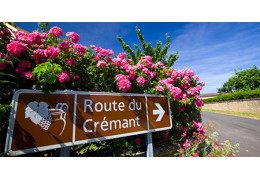
What Are the Different Types of Crémants?
Crémants are sparkling wines produced in France using the traditional method...

Tout savoir sur le dosage en champagne
Champagne dosage is a crucial step in the production of this prestigious spa...

Everything You Need to Know About Non-Alcoholic Wine
Non-alcoholic wine is gaining popularity among wine lovers who want to enjoy...

Coronavirus crisis: How can French winegrowers be helped?
The trend towards ‘skyperos’ - virtual online aperitifs - might lead you to ...
